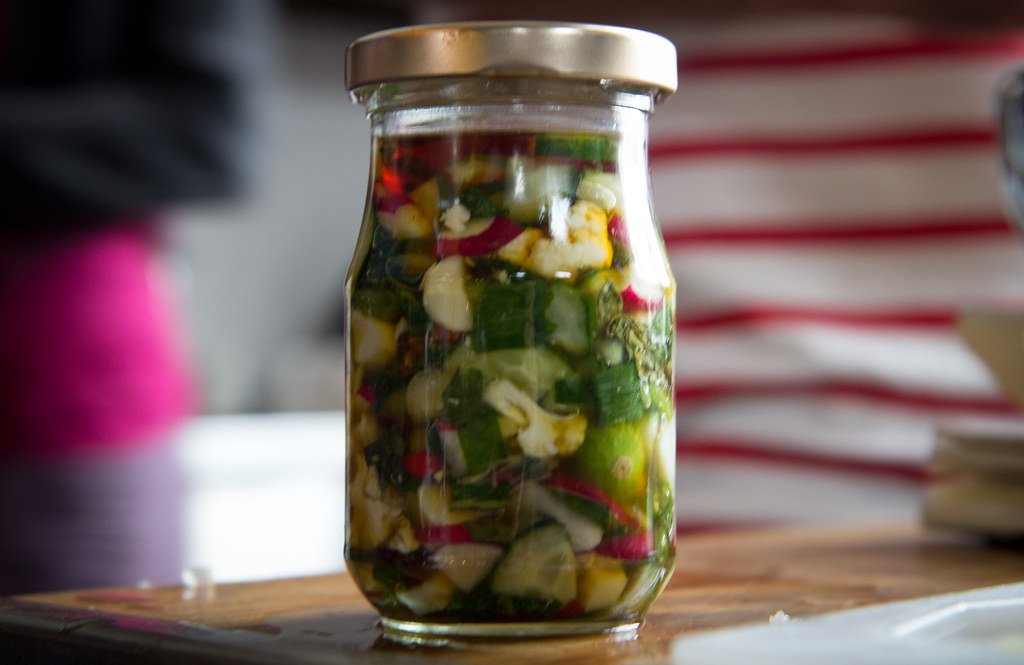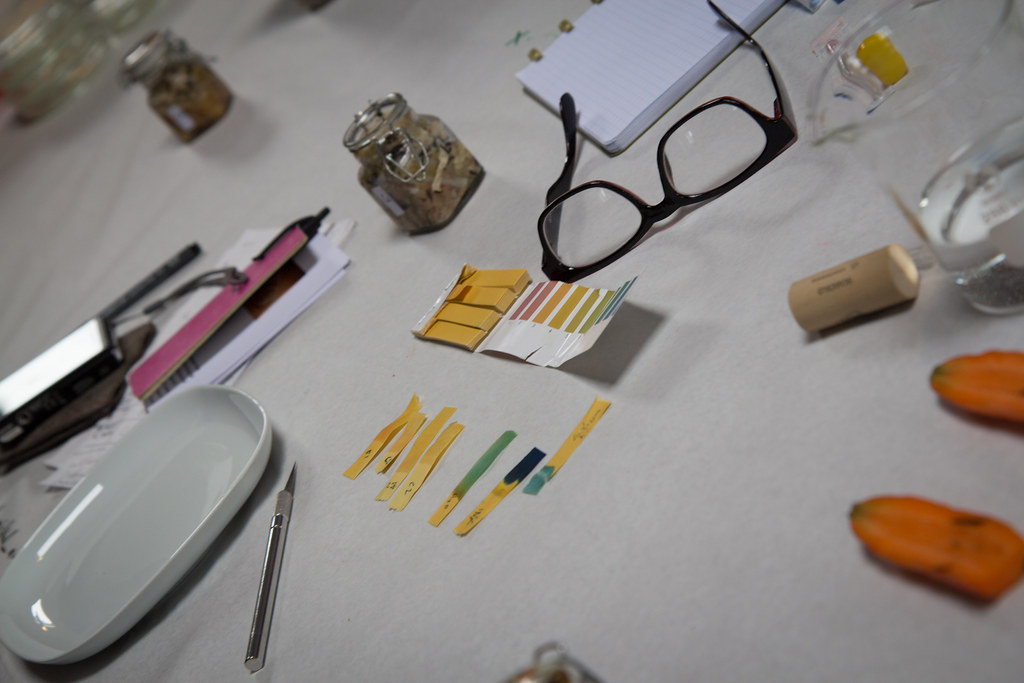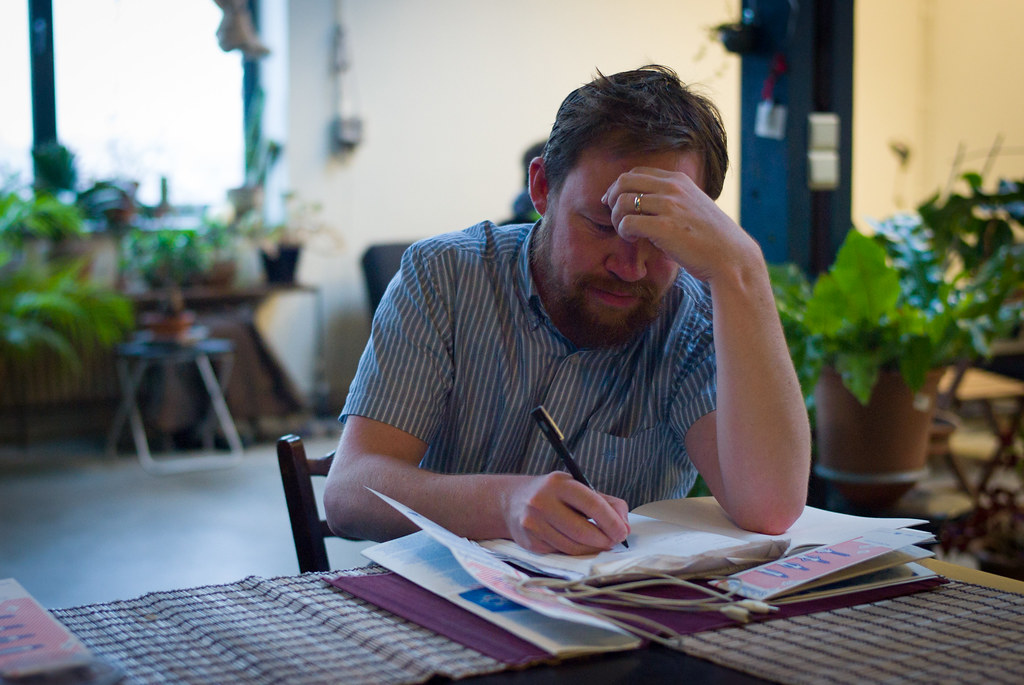Table of Contents
Biochymickal Arts 20130914
day two of Biochymickal Arts 2013
Welcome/framing
I'd like to begin by explaining the title of this workshop. We had several people comment that we have misspelled the name: it's not spelled with a “Y” and it isn't spelled with “ck”. Well, we intentionally used the Y and the ck, as they have been used in the early scientific texts, in the time when chymistry was a transition between alchemy and chemistry, a time when magic an mysticism were a part of how people (including scientists) explained the world. The edges between sciences, crafts, philosophy and spirituality were still very fuzzy. This was also a time of changing rituals, a time of demystification. While alchymickal crafts focused on communing with the powers of nature, chymistry and later chemistry began adopting the scientific technique: empirical, evidence based, reproducible experiments. Today we are in need of a different kind of demystification: of closed, proprietary systems, making them more open and accessible, at least for questioning, if not tinkering by those subscribing to principles of DIY and maker cultures. Furthermore, there is a need for a re-integration of rituals: arcane lab technique, with the more wide-spread gestures used in the kitchen for example. Perhaps even more importantly we need to find new metaphors that can work across disciplines and help us understand our topic of inquiry. Especially when working with living systems, perhaps it is time to move away from mechanistic models based on clocks, steam machines or computers, and towards biomimetic or biomorphic metaphors, or those used in cooking and fermentation; an example could be the metaphor of “growth” as applied to capitalism: is it a linear, cancerous, unstoppable growth, or is it more something like a spiral growth that happens in fermentation, where death and decay are built into the system to produce something very tasty at the end?

The second word in the title is “Arts”. Around the time when chymistry was around, arts were deeply involved in science, crafts and society. “Craftsmanship” was an integral part of every artist's training and apprenticeship: becoming intimately acquainted with the tools and techniques of one's art practice. When we speak of bio-artists today, or synthetic biologists, it is clear that we are only at the beginning of an evolving craftsmanship and a relationship with tools that used to be the exclusive domain of scientists. Secondly, the truly meaningful art is always about the wider world, it is more than just the craft or the technique. It makes us stop and think, or even just take time to observe, take some distance from the whirlwind of facts, news, requests, tweets, papers, events, technologies, and other phenomena we're faced with on a daily basis. Making and/or experiencing art is a humus for growing (new) cultures. Furthermore, in the words of Daisy Ginsberg, art can help science and technology ask better questions, rather than finding great solutions to wrong problems.

Terminology clarified, let's look at the flow of the day. In the morning, we'll look at the wider context, the background and stories of fermentation and biohacking. We'll be “learning about”, from Maria, Brian and Meredith. In the afternoon, we'll have a 4 hour Open Space workshop, with a variety of hands-on sessions to “learn by doing”. As you might all know, in Open Space you are the ones who propose the sessions. We have prepared a couple to make sure that the basics are covered, but for the rest it's up to you. In Open Space there is one “law”: The law of the two feet: you have feet, so use them: move from one session to another if you feel that you're not learning or contributing. There will be plenty of opportunities for sharing what happened, so you don't have to worry that you'll miss anything. If you need technical assistance, ask Rasa (Kitchen), Nik (Wetlab), Maja (any other spaces). If it all becomes a bit much, feel free to retreat to the library, we have a set of great books related to our subjects. We hope you'll have a chance to use them. One thing we do ask of you is to document, document, document your process and results as you go. Please keep track of what you're doing - something akin to lab-notes or recipes: what are you trying to do, how are you doing it, what are the results… Please write, take photos or videos… and put them online on the Libarynth: http://lib.fo.am/biochymickal_arts_2013.
Finally, I'd like to underline Rasa's fermentation methodology that might become our motto for this workshop: “Try but don't die!”
–Maja Kuzmanovic
keep notes, take photos, put stuff on the libarynth
day two in summary
Language and gesture
We talked and experienced the language of embodied gestures, that make up any craft and are a part of a vast ocean of tacit knowledge that threatens to be forgotten or misinterpreted, when it crosses into another culture. We've seen how an easy instruction to prepare slides to look at fermented vegetables under the microscope becomes a messy and fiddly task when we don't have the experience in our fingers, and when we use the tools that aren't quite appropriate… Or learning about the particular gestures used to streak bacterial colonies, or the magic of picking herbs before dawn, or stirring milk for yoghurt, not to mention the codes and gestures of the hidden fermentation networks in Japan, so similar to the secret handshakes of some of the European occult brotherhoods.

It became apparent just how much different terminology we can use to describe the same thing (e.g. to describe bacterial cultures added to a new fermentation: trigger, starter, mother; the brewers in Lithuania not using the term “brewing” to describe what they're doing…). The differences between disciplines, but also across time - Maria talked about how the Japanese craftsmen described their process in such poetic ways that it sounded more like a myth than a process. Or the scientific terminology used by Meredith to describe the “metacyc” pathway. While the language is internally consistent, it is easily misunderstood or even incomprehensible outside of the culture that produced it.
Culture and environment
We talked about many forms of culture yesterday. From crossing continents to learn different fermentation techniques in Japan and obtaining Jewish bacterial cultures in NYC, to learning about and observing bacterial cultures grow on nutrient media, or inoculating petri-dishes with cultures from vegetable and milk fermentations.
We also spoke a lot about the relationships between culture and the environment. In human cultures, the diversity of environmental conditions of people's habitats influences the techniques and the tastes of fermented goods. Also, Maria mentioned that the relationship between the health of the environment has a direct link to the taste of fermented goods. In terms of bacterial cultures, we talked about fermentation as a dynamic process of succession of bacterial cultures who manipulated their environment to suit themselves, creating a monoculture and proliferating so much to literally sour the environment for them selves and die off (we humans should be able to learn something from this!!), at the same time, they prepared the environmental conditions to be perfectly suited to other, acid loving cultures - as we have seen when we measured the Ph levels and found that even the youngest ferments were in the acidic range.

Fermentation and metabolism
Meredith described fermentation as a metabolic process, that as with other cooking processes eliminates bacteria that eat us, and proliferates bacteria that help us eat. Maria talked about fermentation being used for preservation, but also for intensification of flavour (or production of alcohol) - both of which can help us digest substances that would either be rotten or bland if eaten in high enough quantities and for a long time (the whole winter). Meredith talked about the metabolic pathway of vitamin C and asked whether we can engineer gut flora to produce vitamic C in our body and help us survive in harsh situations. Could we introduce them in our gut through an appealing medium such as yoghurt, rather than a disgusting mush of E.Coli? We ended with a lot of open questions, including when is the concentration of vitamin C highest in a fermentation process?
Essence and code
When thinking about the day, one word kept popping up: essence. From eating the tiniest pieces of the precious funazushi, to the Sisyphus' task of attempting to slice minuscule pieces of decomposing vegetables to make microscope slides, to tasting one clove of garlic fermented in tamari between 10 people, or Riita's three ingredient buckwheat bread. The all pointed to the frugality, gentleness and intensity in both fermentation and DIY bio. And of course, code or recipe as the essence, or source of much complexity in both food and software. We talked about the ancestral codes of fermentation wrapped in myth and rituals. The cultural decoding of funazushi as Parmesan in Italy and Roquefort in France. Learning how to follow and how to let go of recipes from Japan, Korea and Europe. The low-tech hacks of lab equipment, like Nik's inoculation loop made out of a paper-clip and a cork from a wine bottle. A lot of our work seemed to turn around learning how improvise.

introduction to fermentation and ancestral practice
maria tarantino
- overview of texts - “Wild Fermentation” (WF) and “Art of Fermentation” (AoF)
- quote from first page of AoF
- experiments in finding how widespread fermented veg are, taste is familiar in many cultures
- fermentation is very simple “45 grams of salt for 2 kilos of vegetables” as basic rule
- very obvious signals if veg. fermentation go 'wrong', others are not so obvious (e.g. almond taste → cyanide, prussic acid)
- only lactobacteria can thrive in such a concentration of salt
- ancestral practice
- Korean text on fermentation with ~1000s of years of written history
- video MAHJONG.dv
- in japan. fish that is neither raw, nor cooked, at that point didn't know much about fermentation. put the fish in a doll box. LHR→BRU
- developed a strategy to find out what this fish is.
- went to .jp restaurant (“just throw it away”)
- went to .jp supermarket (“some special fish” discovered it was fermented)
- asked around, pointed to well know .jp chef from inada (ancient technique, needs green tea (unfermented) to be poured over it, had never tasted it himself)
- had grown into the shape of a legend, by the time it was served
- taste wasn't so special, red fish, fermented rice, sour
- returns to japan, contacts expert in fermented sushi (funazushi), able to make it at home
- visit people making it, tasted it, was wonderful
- taste of 'parmesan' to Italian, like 'Roquefort' for a Frenchman
- possible origins in Vietnam/Laos 'pla ra', spread to CJK
- funazushi ~1300 AD near kyoto, keeping fish in salt to deliver to emperor packed with cooked rice. during that period, rice was more important than fish. fish used to enhance the rice. body of fish (usually with eggs) filled by the mouth with cooked rice and kept for ~1yr prototype for contemporary sushi
- foods often exist in a specific biotope, does it make sense (or even work) to create them in another. e.g. rice straw in making funazushi
- rice straw very important for making natto
- what bacteria is in the straw? can the ancestral practice be 'translated' into another culture? e.g. carp → tench
- 6yr old sample → tastes 'fine'
- not about quantity, but intensity of taste
- “discover the nutritional value of wild foods” chart/table Robert Shosteck at Mother Earth News
- Korean cuisine (wide range of fermentation (short hot summer, long cold winter), proximity of sea and mountains e.g fish & chestnuts) as masters of architecture of flavour
- various cuisines as situated on a time line of fermentation
- kiosk. Lebanese wild fermentation of bulgour
- vocab. 'trigger' rather than culture or innoculum. something able to start the fermentation. “starter” in brewing. (SCOBY is an acronym for Symbiotic Colony of Bacteria and Yeast)
- 'seed culture' for milk and 'root culture' → bread

the biochemistry of fermentation
brian degger, meredith l. patterson & general discussion
- citric acid cycle with aconitate
- fermentation of liquids to produce safe/palatable drinking 'water'
- sugar, yeast, water
- alcohol producing fermentation → self sterilising → alcohol production kills bacteria
- (biotech as method to maintain selection pressure)
- fermentation as method to produce insulin,
- where is the line between metabolism and fermentation
- veg. fermentation - usually anaerobic
- spontaneous → relying on wild yeast & bacteria
- controlled → specific introduced
- what category distinctions are useful?
- fermentation as a metabolic process
- […]
- possible to manipulate 'environment' in which fermentation occurs to favour particular organisms or products (e.g yeast and sugar in beer/wine production)
- harmful bacteria == “bacteria that can eat you”
- fermentation in food production as method to favour selection of productive rather than harmful bacteria
- microbiology relying on 'law of excluded middle' quite heavily

- GFP as basis for many diagnostics
- GFP yogurt as 'Hello World' for biohacking
- ascorbate sytheisis pathway is 'broken' in humans, most mammals have metabolic pathway to produce vitamin C as end product. “how can you reboot the ascorbate synthesis pathway?”
- establish artificial symbiotic relation with human microbe to produce missing enzyme?
- modify one of the 'yogurt making bacteria' to produce missing enzyme
- early days of 'microbiome engineering'
- x.ref MetacCyc “L-abscorbate biosynthesis IV”
- check metacyc for link between Lactobacillus and asorbic acid production
- L-ascorbate biosynthesis I, L-ascorbate biosynthesis II
buckwheat flatbread for dummies
riitta oittinen
Very simple bread recipes (with yoghurt/jam): http://kasviksenabelgiassa.wordpress.com/2013/09/19/buckwheat-flatbread/
continued at biochymickal_arts_20130915